Steven Pressfield's Blog, page 45
October 19, 2018
File Under “What Not To Do, Lesson #1”
I emailed a company with a question about their product.
I didn’t receive a response.
I emailed a second time, in case the first email opted for a Sunday stroll instead of delivery.
Still no response.
I tried to contact them on Facebook.
Their response?
They posted a reply saying someone would be in contact—then my comment and their reply were deleted, and I was blocked from commenting on their Facebook page.
I tried to contact them on Twitter.
No response.
I went back to their Twitter page. They had blocked me.
I have a valid question as well as documentation that led me to be concerned.
I’m not calling them names or trolling or anything of the like. I’m simply trying to obtain answers to questions about one of their products.
Their response? Delete, block, avoid.
If you make a mistake or are in error, or someone questions you or your product, don’t hide.
The greatest relationships are forged in the fire of errors/mistakes/misunderstandings and so on.
I learned this from Bob Danzig, whom I’ve written about before on this blog (see “Thank You Bob Danzig” “Endless Possibilities“).
When Bob was a young salesman at the Albany Times-Union, desperately trying to increase advertising, and decrease ad dollars going to the rival paper, Bob managed to convince the head of a large supermarket that was opening in the area to take out a full page ad in the Sunday edition, for the weekend the store was opening.
On the day the ad was supposed to run, Bob opened his own paper with glee, looking forward to seeing the ad himself.
It wasn’t there.
Bob rushed down to the paper’s office and pulled out the order for the ad, only to find that the ad was scheduled for the next Sunday—and that the handwriting for that order was his own. He’d messed up the date for the opening of a major supermarket and messed up his paper’s opportunity to dominate the ad dollars made available by the supermarket.
Bob could have started looking for a new job that moment, but instead he raced to the home of the head of the supermarket. The gentleman was just returning from church and had not yet seen the paper. Bob told him what had happened and then shared a plan for how his paper would run an advertising campaign, what it would look like, the number of pages, and dates, and so on, at no cost to the supermarket.
Bob kept his job and later became publisher of that paper. However, on that particular day, Bob received a thank you from the head of the supermarket, for acting like a partner and showing that he cared about doing the right thing and taking care of customers.
Bob ran toward instead of away from the problem, and in return saved his career and helped his paper turn a corner. Not too many years later, his paper had taken so many ad dollars from its rival that the rival shut down.
Failing to return e-mails and blocking individuals on Facebook and Twitter isn’t an answer. It’s a delay tactic. At some point we all have to face errors/mistakes/misunderstandings/etc. Better to run toward them than to let them fester. The toxic cleanup that comes with festering isn’t worth it.
Side note: This practice applies to your work with an editor or critic, or anyone else in your industry of choice. Your editor sees a problem with your manuscript and suggests cuts? You can hide and fight all the way or you can face the problems and work with the editor to sort them out. The critic? You don’t have to address them or even listen to them, but . . . The good ones (I’m not talking the Amazon reviewer still living in his parent’s basement), the ones who know the industry, often have insights worth paying attention to, even if they sting. Learn from them.
The faster—and sooner—you run toward the problem, the faster—and sooner—it will be behind you.
October 17, 2018
The Pain Zone
John Naber won four swimming gold medals at the ’76 Olympic Games in Montreal, each in world-record time. He said something in an interview once that sticks with me to this day.
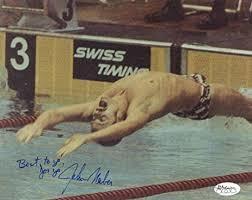
John Naber, deep in the Pain Zone
A reporter asked Naber, “What’s the difference between a good swimmer and a great swimmer?”
Here’s how Naber answered (I’m paraphrasing from memory):
The thing about competitive swimming is that the instant you hit the water, you enter the Pain Zone. Your heart is hammering, your lungs are on fire, your muscles are straining to their maximum. It’s hell.
The difference between a good swimmer and a great swimmer is that the great swimmer has the capacity to go a little bit deeper into the Pain Zone … and to stay there a little bit longer.
I’m just now finishing a novel—filling the blank pages on the climactic chapters—and I am deep into the Pain Zone. Resistance is kicking my ass. I think of John Naber every day.
Gloria Steinem once said
I don’t like to write. I like to have written.
It helps me a lot to remind myself first that there is a Pain Zone, and second, that it’s universal. Every one of us hits that wall. Every one feels our lungs burning, our heart about to explode out of our chest. Every one of us wants to quit. Every one wants to back off, just a little, so this damn struggle will stop hurting so much.
I keep thinking back to John Naber.
The difference between a good swimmer and a great swimmer is that the great swimmer finds a way to go a little bit deeper into the Pain Zone … and to stay there a little bit longer.
October 12, 2018
Connecting
The simple things don’t require connections to people who have already “made it.”
Last week I touched on the power of simple hand-written notes.
Some of the responses I’ve received have been along the lines of not being able to obtain the contact information of well-known, “made” individuals or not physically being able to do the handwriting.
I get the latter. As I age, my hands tire. Gripping the pen is harder. Typing is easier. The point is just to connect. One reason I like Brett McKay so much, and often find myself referring people to his site “The Art of Manliness” is because every now and then I’ll receive an email from him, asking what’s up. How are things going? What’s new? It’s a bonus that what he shares on his site is great information. Who am I to Brett other than a publicist wanting to pitch clients, but . . . He keeps in touch and I very much appreciate the kindness.
As far as reaching out to made individuals goes . . . Don’t start there.
Start with a neighbor.
Start with a friend.
Start with a relative.
Don’t be fake.
Build a relationship with them. Don’t do it because you’re building up for an ask. Do it because it is a good thing to do. Friends and relatives and neighbors can be a great source of feedback in addition to being great supporters.
Invite them into your life—and take a genuine interest in their lives.
Over the past 17 years of working in a home-base office, this is the piece that I’ve struggled with the most. It takes time and energy—and when you’re working at home, you’re the employee and the boss, the secretary and the cleaning service, and so much more.
You have to be the relationship builder, too.
Go to lunch with a friend.
Meet a neighbor for coffee every now and then.
Call that aunt you haven’t seen since your were 8.
Create your own community and you’ll find that they’ll be there for you when it counts. Just be genuine and remember that it goes both ways.
AND THEN . . . After all that, expand your community. You’ve got to build a base first.
October 10, 2018
It All Starts With the Writer
The actress reads a book or screenplay and says, “I want to do this.”
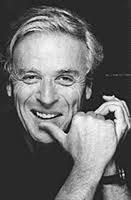
William Goldman, screenwriter of “All the President’s Men,” “Butch Cassidy and the Sundance Kid,” and author of “Adventures in the Screen Trade”
We applaud her vision.
The editor discovers a manuscript and publishes it.
We salute his taste.
The director, the producer, the financier find a hot property and scoop it up.
We give ’em an award.
I’m not saying these artists don’t deserve their plaudits.
All I’m saying is
It all begins with the writer.
The fun starts with you and me.
Everybody else waits downstream.
Everyone else comes late to the party.
Others may interpret. They may mount, they may discover, they may finance, underwrite, refine, support, reconfigure. They may “bring to life.”
But the material they work with had its genesis with you and me.
At the moment of conception there are only two entities in the room—you and your Muse.
William Goldman said famously in Adventures in the Screen Trade
Nobody knows anything.
Lemme propose an amendment.
Before the writer, nobody has anything.
I wrote in The Artist’s Journey that the artist enters the void with nothing and comes back with something.
A machine can’t do that.
A supercomputer packed with the most powerful AI can’t do that.
In all of creation, only two creatures can do that.
Gods.
And you and I.
Keep this in mind, brothers and sisters, when some agent or manager or producer disrespects writers or the writing process.
Before the writer, nobody’s got nothing.
October 5, 2018
Small. Simple. Powerful.
This week I received a postcard from Chewy.com.
It was handwritten and hand-addressed.
It was personalized.
It led me to place another order.
The handwritten message and hand-addressed portion made a difference, because I know how much time that takes.
I throw away a chunk of holiday cards every year just because I write them by hand, in pen, and if I make a mistake, I do it again. Crossing out words and continuing on as I did as a kid writing letters to my grandmother isn’t acceptable. If you’re representing a company, product, etc., the message and its spelling need to be on target. No crossed out words.
The addressing made a difference, because I wasn’t just another generic label. Someone had to write out my name and address—and my last name is a hard one, so they had to go letter by letter to make sure they got it right.
The personalization mattered because someone took the time to recognize my purchase and to say thank you.
I placed another order, just as I’m sure Chewy.com hoped I would.
I could shop anywhere, but they did something that I recognize takes time and thought.
These are the little things that count.
Small.
Simple.
Powerful.
Here’s something else:
From time to time, I’ve received thank you notes and postcards from readers of www.StevenPressfield.com and customers of www.BlackIrishBooks.com.
I track who sends them and I remember them, because they did something kind and spent their time on me. Time is valuable and valued.
And while I’m not buying everyone’s books and painting and albums, I’m more inclined to check out the creations from the individuals who contacted me before they had something to pitch.
There’s a lot of power in just a note, in just a thank you, in just a little personalization, and giving your time to someone else.
October 3, 2018
“This Will Change Your Life.” Really?
If you’re an aspiring writer (or even an established one), you’ve seen websites and seminars and workshops that promise to “help you write a bestseller.”
I’ve read and attended some of these myself. And I’ve learned from them. They haven’t been a complete waste.
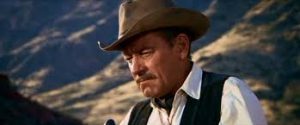
William Holden as Pike Bishop in “The Wild Bunch”
But let’s dig a little deeper and ask ourselves what’s going on in our minds when we buy into such a promise.
“Bestseller” in this lexicon equals “success.”
The promise between the lines is
“This will change your life”
Fill in the blanks for what you imagine that means. Money. Fame. A better class of friends/lovers/whatever.
Write a bestseller and [XYZ Good Stuff] will materialize in your life.
Really?
I was having dinner with a friend the other night, a long-established and extremely successful writer both critically and commercially. He was saying how he had noticed lately that he wasn’t getting the same rush out of a new contract or a deal or a collaboration as he once did.
We theorized that the element of “this will change your life” had gone out of the equation.
Okay, okay … if you and I were in a rock band and we had a hit that took us from playing intimate venues to stadiums and arenas … yeah, I agree, that might be credibly said to “change your life.”
Like getting called up to the major leagues.
Or getting appointed to the Supreme Court.
Those would change your life.
But you and I are not rock stars or ball players or politicians.
We’re writers.
Whatever success or celebrity we may attain on Day 249, when the alarm goes off the next morning, we’re back right where we were on Day 248.
We’ll grab the same cup of coffee, stumble into the same office, plop down before the same keyboard, and face the same dragon.
No Big Five contract will make that fight any easier.
No position on the bestseller list will guarantee that our next book won’t be, as they say on Get Shorty, “shite.”
In other words, the core challenges (and satisfactions) of our life are not going to change, even when something life-changing happens to us.
The blank page remains.
Our demons stay the same.
The struggle never goes away. It never gets easier.
That’s our life, yours and mine.
We’ve chosen it and we stick by it.
There’s a great scene in the Sam Peckinpah movie, The Wild Bunch (screenplay by Peckinpah and Walon Green).
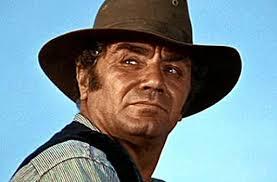
Ernest Borgnine as Dutch Engstrom
William Holden plays Pike Bishop; Ernest Borgnine is Dutch Engstrom. They’re the two senior members of the outlaw gang that includes Warren Oates and Ben Johnson and as Lyle and Tector Gorch, with Jaime Sanchez as Angel and a great Edmund O’Brien as Freddie.
It’s night, a campsite in an abandoned adobe, after a day in which a long-planned holdup has gone catastrophically awry and the Wild Bunch, with heavy losses, has barely escaped. Now they’re regrouping, trying to figure out where to go and what to do next.
Holden and Borgnine have tucked into their respective blankets and sleeping gear. They’re leaning back on their saddles, which they’re using as pillows.
PIKE
I’d like to make one last score and back off.
Dutch absorbs this skeptically.
DUTCH
Back off to what?
The rueful expression on Pike’s face shows he grasps the fatuity of what he has just said. He and Dutch speculate about what heist they might try next. Steal an army payroll maybe. Rob a train.
DUTCH
They’ll be waiting for us.
PIKE
I wouldn’t have it any other way.
Another exchange or two passes. At last Dutch rolls onto his side and pulls his blanket up around his shoulders, preparing for sleep.
DUTCH
Pike …
PIKE
Yeah?
DUTCH
I wouldn’t have it any other way either.
September 28, 2018
More Iron Filings
After Oprah made the decision to interview Steve, we met a few of her team members. There was the TV show, but also the magazine, and the site, and promotions related to all three.
I spoke with someone at the magazine and gave her the quote from Steve that I’ve seen shared more than any other: “Put your ass where your heart wants to be.” She declined and said that their audience wouldn’t like the language. Fast forward to the airing of the interview and the clips shared online and guess which quote Oprah discussed. Yep. Ass and all.
The quote was known by the TV team and the magazine team, but they went in different directions.
This is an example of when a sure thing isn’t even a sure thing, which brings me to the name of this column, “What It Takes,” and my realization that I don’t really know what it takes.
I 100% know what it doesn’t take—what doesn’t work—but . . . What it takes? No. Not 100%.
Look at Oprah’s interview with Steve. Her team members were provided the same books and information and yet, different decisions were made. During the interview, Steve brings it up, not Oprah, but her team could have edited it out, but they didn’t. Oprah could have redirected, but she didn’t. She went with it. When the team pulling clips for the site and social media made its decisions, it didn’t have to go with that section, but it did.
Is it because magazine readers are more offended by “ass” than TV viewers or social media followers? I don’t think so. I think it’s about that force I was struggling with in last weeks “What It Takes” post, about different forces being at play.
I want to go back to the iron filings and bar magnet.
How much control do we really have? How much of it is us having what it takes and how much of it is another force?
I read an interview with Barbra Streisand this week, during which she said, “These times give me energy.” Maybe our times are the magnets—the force—whether it is Babs writing this new album or Bob Dylan penning his classics. Maybe it’s the same force thundering toward poet Ruth Stone or Steve when the Muse visits. But what—or who—is the force or who is manipulating the force? God? A muse? Or something as simple as a magnet? And can it’s explanation be expressed as a theorem, so that we could reproduce the force on any given day?
There’s an unending supply of courses on how to write a bestseller or promote a bestseller or how to become a millionaire or how to ___________ (insert whatever it is here).
If it was as simple as following those steps we would all be millionaires with bestselling books, perfect marriages, extraordinary kids, yada, yada, yada. But that’s not how it is.
I could even hand you all the materials I’ve written for bestselling authors and the names and contact information for the journalists and producers and others who have helped propel my clients toward great heights, but you know what? It might not be what it takes for you. Maybe it’s you or maybe it’s the world and where it’s at at the time.
Would On the Road or Catcher in the Rye receive the same reception if they were published today? Same with Anna Karenina and Pride and Prejudice. Extraordinary writing all around—and all exploring timeless themes—but would there be the same reception today if they were from unknown writers? Would Sherlock Holmes be published as a series of blog posts by a guy named John Watson? What of Mark Twain? His wit and writing live strong, but would his stories’ original dressings be of interest if presented for the first time today?
I’ve been reading The Odyssey with my son and it’s been a slog. If that came out today, what would we all say? The first few pages are kin to diving into George R. R. Martin’s A Song of Fire and Ice series, starting with book three—or diving into the Game of Thrones HBO version of the series, starting with season four. Who in the world are all these characters?
Or was The Odyssey written and preserved because the magnet underneath it was stronger than the rest and that same magnet was needed to bring us other classic on the road stories, like On the Road or that of Huck and Finn?
Along those same lines, was Dickens the magnet or force for Tolstoy, so that at their dinner, Levin could talk to Oblonsky of “some external power that has seized me” and just a few minutes later, Oblonsky could say, “It’s all very well for you to talk like that—it’s like that gentleman in Dickens, who with his left hand threw all difficult questions over his right shoulder.” And how much of it was the time, with Dickens being born not quite 20 years before Tolstoy? Tolstoy might have needed Dickens to create Levin.
And is there a theorem that could express any of this?
x historical events + y genre, multiplied by z flawless writing, and then all of it divided by who the author is and where he or she lives or was raised, and then, once you get to that point, you multiply it by the artist’s education (her knowledge of Dickens or Picasso or Schubert).
But . . . There’s one more thing. The fire is part of it. How much do you want it? How willing are you to do whatever it takes?
A few weeks ago, we reposted Shawn’s “Cheat Sheet” post. In it, Shawn tells of seeking advice from an industry leader. He tells the guy about a project he wants to do and expects to get a roadmap. Well, the guy didn’t give him a roadmap.
However, the guy did ask him what he wanted.
How much did Shawn really want it?
The one thing I know for 100% certain, when it comes to what it takes, is this: You have to want it. You have to be one of those people who are moved by the force. If that magnet hits you, you have to react. You have to move. You have to do something.
In that interview with Oprah, just after Steve explained his “ass” quote, Oprah brought up Nike’s Just do it. That’s who you have to be—someone who just does it. You have to move with the force.
September 26, 2018
Ins and Outs in a Love Story
Remember The Way We Were, the 1973 blockbuster starring-vehicle for Barbra Streisand and Robert Redford? The theme song, sung by Babs, won an Oscar; the film itself was rated by AFI as #6 on the list of Greatest Love Stories of All Time.
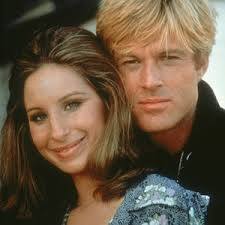
Barbra Streisand and Robert Redford in “The Way We Were”
But let’s focus, you and I, on the THEME and how it is expressed in the Opening and Closing Images. Remember our third rule of In and Outs Club:
The opening and closing images must be on-theme.
The In to The Way We Were is the titles sequence. It’s a montage of quick scenes of students at a college, apparently somewhere in the East, just before the U.S. entered World War II.
The sequence introduces us to Katie Morosky (Streisand) and Hubbell Gardiner (Redford), both students at this college. We see Hubbell sprinting in a track meet, throwing the javelin, pulling campus pranks, dating gorgeous cheerleaders. Clearly he is the Golden Youth, a carefree got-it-made All-American boy.
Katie? Not so much. We see her passionately demonstrating against fascism (of the Spanish Civil War), working at the campus malt shop, mimeographing radical literature, studying hard and holding down half a dozen part-time jobs. Katie is clearly the Campus Commie, a curly-maned Jewish girl either literally from Brooklyn or from some Brooklyn of the mind.
What has this In told us?
Since the movie is titled The Way We Were (emphasis on “were”), we in the audience can make a pretty good guess that …
Katie and Hubbell will somehow fall in love.
Their love will be special in a way that is political and moral as well as romantic.
Their love will be doomed.
The lovers are clearly opposites, not just ethnically but politically and perhaps morally as well. These factors will be, we suspect, what draws Katie and Hubbell together … and ultimately, we fear, what will tear them apart.
We may also surmise, from the era in which the story is set, that Katie and Hubbell’s romantic trajectory will parallel and be a metaphor for the American political narrative of the war and the postwar.
If we were forced to make a guess at the movie’s theme based exclusively on the In, we might venture something like
Two opposite Americas will unite passionately and with great hope for the future and then, with painful regret, revert to their previous antithetical state.
Now let’s turn to the Out.
Remember our first two rules of Ins and Outs Club.
The opening and closing images should resonate with one another. They should look as alike as we can make them within reason.
But at the same time, our In and Out should be as far apart emotionally and narratively as possible, to show how much the hero (or heroes) have changed.
The Closing Scene of The Way We Were takes place outside the Plaza Hotel in New York City. We see Katie, twenty or thirty years older and looking in-her-leftish-radical-element as a native New Yorker, crossing toward the hotel from the fountain that fronts Fifth Avenue.
Suddenly Katie draws up. She has spotted Hubbell. He is exiting the hotel with his attractive blonde wife. From Katie’s reaction we realize this sighting is a complete surprise—and more, that Katie probably hasn’t seen Hubbell in years. Both Hubbell and his wife are impeccably attired in prosperous-looking, conventional business-type suits. A doorman has hailed them a taxi; they’re about to step aboard.
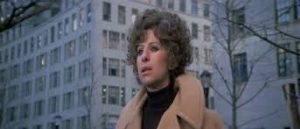
The moment when Katie spots Hubbell outside the Plaza Hotel
Hubbell sees Katie now. She is smiling and crossing toward him. She comes up. Hubbell and Katie embrace as Hubbell’s wife looks on. It’s a polite, non-passionate clutch. Katie and Hubbell exchange forced pleasantries. Hubbell reveals that he’s writing for a TV show now. Katie smiles bravely, but clearly with disappointment for Hubbell. She declares she is married and doing fine.
KATIE
The only David X. Cohen in the phone book.
HUBBELL
What’s the ‘X’ for?
KATIE
(laughs)
The only David X. Cohen in the book.
Katie breaks off this painful encounter with a smile and a wave. She trots across the plaza to a row of tables set up on the sidewalk. These are manned by politically-active-looking matrons and plastered with BAN THE BOMB placards. Katie checks in with one of the ladies and picks up a sheaf of pamphlets, ready to take her shift as a demonstrator.
Hubbell moves into frame. He has crossed alone from the taxi stand. Hubbell indicates the literature in Katie’s hand.
HUBBELL
You never give up, do you?
KATIE
Only when I’m absolutely forced to.
The lovers embrace a second time. This time each hangs onto the other. The poignancy of the moment is clear. When the pair separates, Hubbell asks about their daughter. “She’s beautiful,” says Katie. “You’d be so proud of her.” Katie invites Hubbell to come with his wife to join her and her husband for dinner.
HUBBELL
(with profound regret)
I can’t.
Katie acknowledges this heartbreaking reality.
The lovers part for the final time.
The film now cuts to Katie in “long shot,” in front of the Plaza, holding up her anti-war pamphlets …
KATIE
Ban the Bomb! Take a stand for Peace Now!
See how this ending adheres to our three principles of Ins and Outs?
The Out is a visual bookend for the In. Katie protesting on campus, Katie advocating for peace on Fifth Avenue. Hubbell riding his golden birthright at college, Hubbell cruising the path-of-not-so-great-resistance into an affluent-but-unsatisfying sunset.
At the same time, the Out is as far away emotionally and narratively from the In as possible. One is a set-up for a great love about to happen; the other is the excruciating knell of its finish.
Thematically the film declares
Love alone does not conquer all. Some gulfs are too wide to bridge.
And it asks
Is this not just Katie and Hubbell’s story, but America’s as well?
The great love/union-of-opposites that was waiting to happen in the Opening has had its run, failed, and been extinguished by the Close.
Even if we don’t know the middle of the story (of the Hollywood Ten, HUAC, McCarthyism, of Jews and Gentiles and principled resistance) we get the essence of this tragic love story just from the In and the Out.
Oddly enough (or maybe not so oddly), the arc of The Way We Were is almost identical to that of The Godfather and of Shane, two other movies we’ve cited in this series. In all three films, the protagonists enter the narrative believing they can change their lives and alter the order of their universes. In all three, by story’s end the heroes realize they can’t. Of the films we’ve talked about in this series, only Good Will Hunting has a “happy” Out. It’s the only one in which the characters’ world actually changes.
September 21, 2018
The Ozzy Osbourne – Stephen Hawking Connection
I went to an Ozzy Osbourne concert with my son.
Zakk Wylde was on stage tapping.
I know about tapping because my son plays guitar.
He knows about tapping because he loves Led Zeppelin.
Eddie Van Halen learned about tapping from Led Zeppelin, too.
When Zakk Wylde was developing his style, he saw Van Halen as a game changer, but he avoided tapping. That was Van Halen’s thing.
Nikki Sixx: How much of an influence was King Eddie (Eddie Van Halen) on you?
Zakk Wylde: I think on everybody, I mean . . .
Nikki Sixx: He really changed the game.
Zakk Wylde: I mean, put it this way . . . Billy Sheehan said, “You know you’ve really changed the game when you’ve influenced people not only that wanna sound . . . that end up copying your thing or sound but that go intentionally out of your way not to sound like you. So that’s when you’ve really influenced people. You know what I mean? So just like, you don’t wanna sound like King Edward or anything like that? Don’t tap. I remember with Oz when I first got in the band it was like, How am I gonna be me? I won’t play with a whammy bar, I’ll get rid of that. . . . I have them now, but I intentionally went out of my way when I first joined the band. No tapping, no whammy bar, no diatonic scales or harmonic minor. You know, three notes of scale . . .
Nikki Sixx: I like how you were like, “I’m going to be in this band with one of my heros and these are the things I’m not going to do.
Zakk Wylde: This way you just won’t sound like that if you don’t do it. . . When GNR was the biggest biggest thing at the time, if you don’t wanna be like Slash get a Flying V or an SG. Just do the opposite of him or get a Strat. You don’t wanna sound like Jimi Hendrix? Don’t play a Stratocaster. Get a Les Paul or get a Flying V. It’s something that’s complete opposite of him. Get a guitar that doesn’t have a whammy on it. Don’t use a Uni-Vibe pedal. You just cross things off the list . . . Getting back to when I first joined the boss, I just crossed off all these things and the only thing I was kind of left with was pentatonic scales. And I love John McLaughlin and he’s the king of it, as far as blazing pentatonic scales and picking them all and everything like that, and Frank Marino is huge on me.”
The thing about choosing to do the opposite is that it means you have to be well versed in the opposite. Zakk Wylde knew the opposites and developed his style and wove in the techniques he’d crossed off the list. That style fit with Ozzy Osbourne.
My son likes Ozzy Osbourne.
That’s how I came to be second row at the concert last Friday, with Zakk Wylde in front of me tapping, with a son mouthing “tapping” to me and pointing at Wylde—the same son who went home and practiced playing ’til the sun came up.
What does this have to do with Stephen Hawking?
In their book The Grand Design, Hawking and Leonard Mlodinow talk about force fields, which was the brainchild of scientist Michael Faraday.
In the centuries between Newton and Faraday one of the great mysteries of physics was that its laws seemed to indicate that forces act across the empty space that separates interacting objects. Faraday didn’t like that. He believed that to move an object, something has to come in contact with it. And so he imagined the space between electric charges and magnets as being filled with invisible tubes that physically do the pushing and pulling. Faraday called those tubes a force field. A good way to visualize a force field is to perform the schoolroom demonstration in which a glass plate is placed over a bar magnet and iron filings spread on the glass. With a few taps to overcome friction, the filings move as if nudged by an unseen power and arrange themselves in a pattern of arcs stretching from one pole of the magnet to the other. That pattern is a map of the unseen force that permeates space. Today we believe that all forces are transmitted by fields, so it is an important concept in modern physics—as well as science fiction.
If you look at the image in The Grand Design, of “the force field of a bar magnet, as illustrated by the reaction of iron filings,” it’s an opportunity to see the beauty of forces that are present but invisible to the eye.
So what if those forces are what lead to art and innovation and also likely destruction and war?
Could there be a theory that would predict, explain, or cause these things to occur and/or perhaps prevent them?
Is there a force that will always lead to a specific reaction?
If tapping is a force, it beget a reaction in Jimmy Page, Eddie Van Halen, Zakk Wylde, and my son—which in turn beget innovation.
If yes, then is the force already in existence or is it created by certain people coming together? Or is there a force bringing them together, which will always guarantee a bang—whether it is Lost Generation expatriates in Paris or Hudson River School landscape artists?
And, if the forces are already there, can we call ourselves creatives?
Or are we more miner-49ers, mining invisible forces to tap into what’s already there?
I listened to Zeppelin and Van Halen as a teenager, but I didn’t know about tapping because I wasn’t paying attention to the how of the music. I was safe on the perimeter instead of deep in the mine with a pickaxe.
Then I birthed a kid who pays attention to the how and who is so passionate about the how that when I see Zakk Wylde tapping, I know what I’m seeing and I have a deeper appreciation for the how.
I realize that this connection is a cross between a puzzle and the game Memory.
Each time I’m exposed to something, I get another card.
A got a card years ago with Zeppelin and Van Halen, but it took my son to make the connection, which led me to a concert in which I stared in awe at Wylde, and had a little brain explosion when I saw him tapping, and saw my son pointing and mouthing “tapping” to me.
It was all already there.
So back to this question of forces.
I think art and innovation and destruction and war are the result of those forces.
Uncovering one and avoiding the other is a mix of those memory cards, which only come with experience and exposure.
Want to be nudged by that force that brought us the impressionists, jazz, and any other movement? You’ve got to be there, ready with a pickaxe for mining, and then paying attention to the connections.
How do you get your pickaxe?
You have to be in the invisible mine.
How do you get to the invisible mine?
You have to know where it exists.
How to get there?
Exposure.
Toward the beginning of the interview he did with Sixx, Wylde and Sixx talk about growing as a musician, and adding the music and artists you’ve been exposed to into your “soup.”
Sixx: We were talking about stuff we grew up on, stuff that inspired us in the beginning and I wondered about some of your favorites—like even going back. I know you started when you were 15, right?
Wylde: Yeah, well I was 14 years old, first year of high school and I started getting serious, but, uh . . . When people ask me, “Do you have any advice for my son or daughter?” they’re going to MI or whatever, I say, whatever it is you love, what moves you—like if some kids like, I just love early Metallica . . . —that’s what your band should sound like. You know what I mean? You should be able to open for them. It’s like, I like Meshuggah, too . . . Those are the bands that move you, but you’re doing . . . It’s like if we said with Rich Robinson and the fellas—you know it’s Rich that does those Hendrix Experience tours—it’s like if you said to Rich, you know with the Black Crowes, it sounds kind of like Humble Pie. And, we’re eating that soup and it sounds like Humble Pie, Stones, and probably Rich would go, “Yeah. That’s what I’m on a steady diet of—and that’s why it sounds like that, because that’s what we listen to and that’s what we love.
Sixx: And we feel it when we play it.
Wylde: So yeah. It’s real. It’s like the Stones, back in the early days, you guys must be into blues bands and stuff like that, and Keith would have said, “Yeah, I like Chuck Berry . . . ”
Sixx: And then you grow as a musician—and you pick up new things to put in your soup. Just don’t put wrong things in the soup.
You’re Van Halen and my son watching Zeppelin and you’re Wylde and Sixx—and then one day you’re decades down the road and you have so much exposure that you can talk with ease about Meshuggah and Chuck Berry within a few minutes of each other, and you know who they influenced and who influenced them, and you’ve likely got an arsenal of pickaxes at that point and doing some serious mining.
Suggestions on exposure:
Read The Grand Design by Stephen Hawking and Leonard Mlodinow.
Watch Zakk Wylde’s interview with Nikki Sixx.
Watch Eddie Van Halen share his introduction to tapping.
*A belated thank you to Hawking, and Mlodinow, and Faraday, and Einstein, and Newton. I wish I hadn’t run away from physics in high school. Thank you to Zakk Wylde and Ozzy Osbourne and Led Zeppelin and Eddie Van Halen for the force that landed me at that concert, and which keeps my kid practicing at all hours, and my heart exploding with pride.
September 19, 2018
“I Believe in America . . . “
“I believe in America. America has made my fortune. And I raised my daughter in the American fashion … “
These are the opening lines of The Godfather. They’re spoken in extreme closeup by the undertaker Bonasera in a heavy Italian accent. Bonasera speaks out of deep shadow. He recounts with painful emotion how his beautiful young daughter, defending her honor, was brutally beaten by two young men, “not Italians,” whom the American courts subsequently let go free.
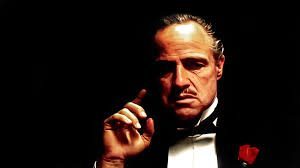
Marlon Brando as Don Corleone in “The Godfather”
The camera slowly pulls back as Bonasera relates his daughter’s woe, until the frame has widened enough that we begin to see the back of another man’s head. Bonasera is speaking to this man. The man is, of course, Don Corleone (Marlon Brando), the Godfather.
Bonasera asks the Godfather for “justice,” i.e. bloody vengeance on the young men who ruined his daughter.
Let’s continue our series on Opening and Closing Images.
The Godfather opens, not with a scene but a sequence—the Wedding Sequence, in which Don Corleone’s daughter Connie (Talia Shire) marries Carlo Rizzi (Gianni Russo). Also at the wedding are the Don’s youngest son, Michael Corleone (Al Pacino) and Michael’s girlfriend Kay Adams (Diane Keaton.)
We’re going to talk about THEME here.
The key scene in the Wedding Sequence for me is between Michael and Kay. Every other member of the Corleone family is “in character” in this sequence. They’re all Mafia-related in one way or another. Except Michael. He’s in the uniform of a U.S. Marine captain. He’s clean-cut. The most “American” of all the characters. And Kay is Mayflower-American. She stands out as an outsider in this traditional Italian wedding.
In the scene, Michael tells Kay the story of how his father, the Don, assisted by his enforcer Luca Brasi, got his godson the singer Johnny Fontaine (Al Martino, patterned after the real-life Frank Sinatra) out of a contract with a big bandleader. This is the first of the famous “I’ll make him an offer he can’t refuse” moments. The Don and Luca presented the bandleader with a contract releasing Johnny.
MICHAEL
(to Kay)
Luca Brasi held a gun to his head and my father assured him
that either his brains or his signature would be on the contract.
(after a pause)
That’s a true story.
Kay is taken aback. She can’t believe her clean-cut war-hero boyfriend is part of this.
MICHAEL
That’s my family, Kay. It’s not me.
That’s the In of The Godfather for me—the Bonasera scene and the Michael and Kay scene.
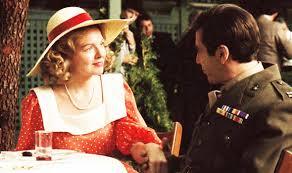
Diane Keaton and Al Pacino in the Wedding Sequence of “The Godfather”
These moments introduce a number of intersecting themes.
One, the idea that the Corleone family (and other Italians like Bonasera) are immigrants and thus not accepted fully as Americans. In other words, this will be a story about a society within a society.
Two, the idea that the Corleone family wants to be fully American. Michael is the character, at least in the opening sequence, who carries this aspiration—witness his Marine Corps identity, his super-WASP girlfriend, etc.
Three, the idea that the greater American society is more corrupt than the Italian mafia society-within-the-society. In other words, we’ll find ourselves rooting for the Corleones against the crooked American cops, politicians, etc.
Everything that will happen in the story from here forward, we understand, will be premised upon this foundation—the rejection of the lesser society by the greater, and the responses of the lesser society to this keenly-felt exclusion.
Now let’s consider the Out, the Closing Image of The Godfather.
Remember our rules for In and Out Club:
The Closing Image must resonate with the Opening Image. It must look as much like it, or have as many echoes of it, as possible.
But at the same time (second rule of In and Out Club):
The Closing Image must be as far away from the Opening, emotionally and narratively, as possible—to show how much the hero has changed.
The Closing Image of the Godfather is a short and highly concentrated one. It has almost no dialogue. It’s virtually all visual.
The scene takes place in the same room where we originally met Bonasera—the Godfather’s office in the Corleone house. Only now Don Vito has died. A new godfather has taken his place—Michael.
Yes, the same Michael who declared in the opening, “That’s my family, Kay. It’s not me.”
In the office, we see the capos pledging their loyalty to the new Don, even kissing his hand. They address him not as “Michael” but as “Don Corleone,” i.e. the title by which his father ruled.
In the adjacent room (the foreground as seen by the camera) stands Kay. She is now Michael’s wife. In the immediately preceding scene, in the office, she had confronted her husband, demanding to know if he (as Michael’s sister Connie had just passionately attested) had had Connie’s husband Carlo murdered. “This one time only,” Michael tells Kay, “I’ll let you ask me about my business.”
Then he lies straight to her face. “No,” he says. Meaning he didn’t order the killing.
Kay hugs her husband, massively relieved. She exits the office.
Now outside, she continues the task of packing up the house (the Corleone family is making the move to Las Vegas.)
As Kay does so, one of the capos in the office starts to close the office door.
The camera position now shifts to a POV from inside the office. We’re looking out of the office toward Kay as the door closes, excluding her—as we in the audience have understood from the start—from all knowledge of the family business.
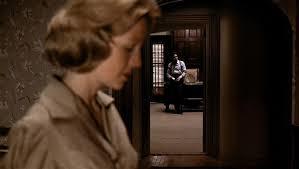
The office door closes on Diane Keaton as Kay in the final scene of “The Godfather”
Neither of these moments, the Opening Images or the Closing Image, is an accident. Both were carefully, brilliantly crafted to be the bookends of this story. To adhere to the principles of Ins and Outs. To be 100% on-theme. And to show how much the hero has changed.
Michael is the hero. In the opening sequence, Michael (like Shane when he first entered the Valley) believed that he could change his destiny and his family’s destiny. He could be the Marine war hero with the Mayflower-American wife. He could be, unlike Bonasera, a real American.
By the story’s end, Michael knows he cannot. The bonds of family and the need to protect it (even, especially, from his American wife Kay) are too strong. The society-within-a-society remains intact. Nothing can overturn it.
What makes The Godfather so great (among many other things) is the scale of its theme—the multi-generational struggle of an immigrant clan to find acceptance while maintaining its ethnic integrity in a greater, more powerful established nation that rejects it.
That was Bonasera’s issue in the Opening Image.
It was Michael and Kay’s issue immediately thereafter in the Wedding Sequence.
And it’s the issue and theme that is brought to conclusion in the Closing Image.



